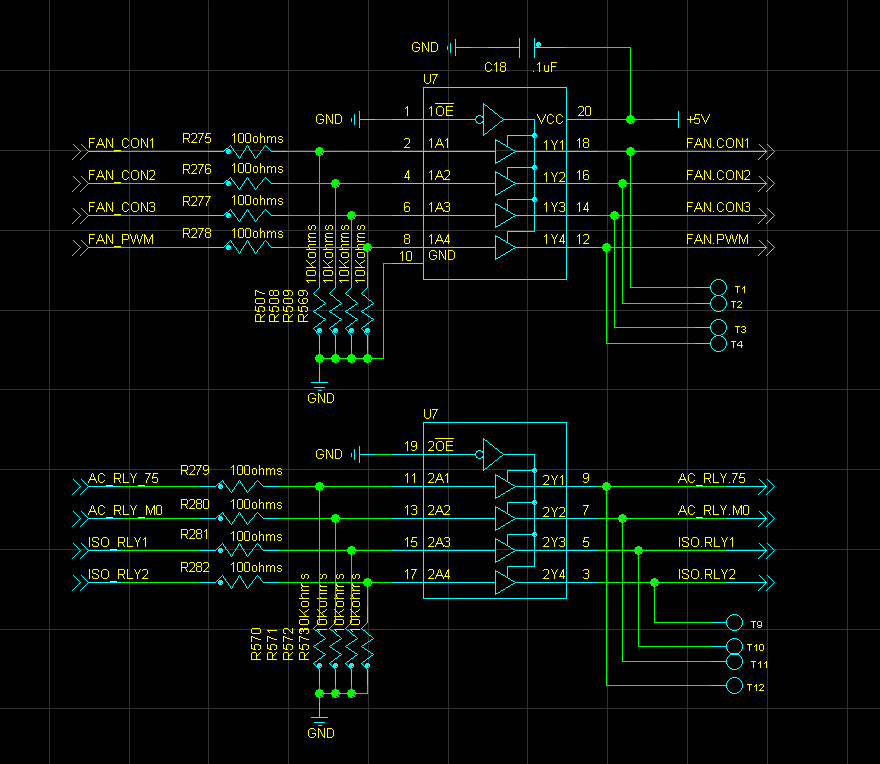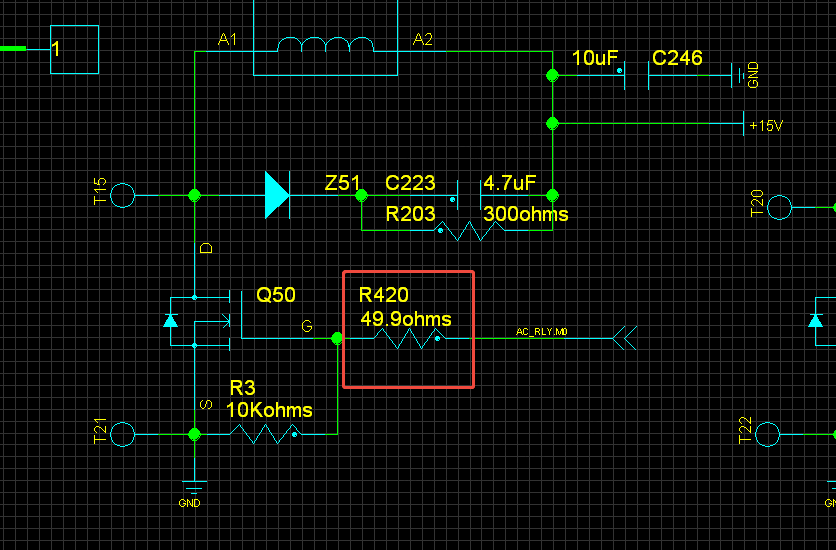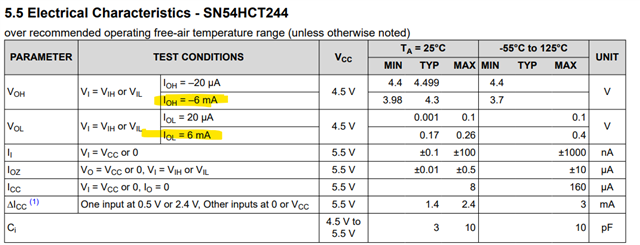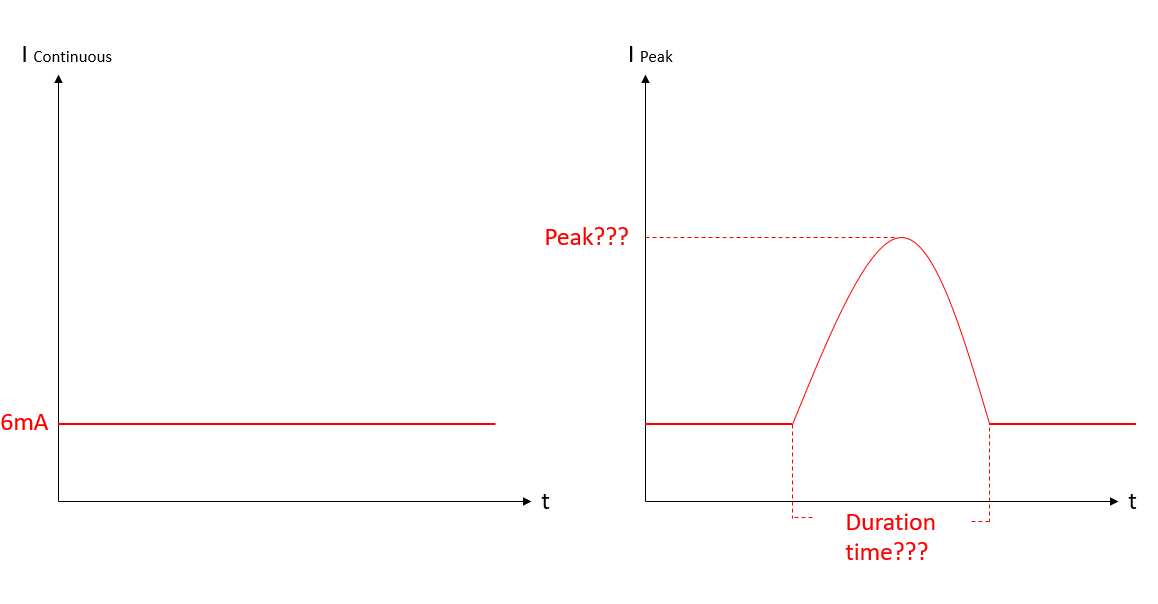Tool/software:
Hi team,
My customer is using SN74HCT244 to drive MOSFET and pin7/9 are short to GND. Q50 is YJM05N06A or AP9477GK.
Could you please help find the reason:


This thread has been locked.
If you have a related question, please click the "Ask a related question" button in the top right corner. The newly created question will be automatically linked to this question.
Tool/software:
Hi team,
My customer is using SN74HCT244 to drive MOSFET and pin7/9 are short to GND. Q50 is YJM05N06A or AP9477GK.
Could you please help find the reason:


Hi Gary,
Is this a singular device issue or does the issue persist if you swap devices out?
Hi Albert,
Issue rate is 6/1000. When customer replace issue devices with new devices, circuits will work normally.
Hi Gary,
Sounds to me like two things:
1. The implementation of the circuit may be damaging devices
2. Bad lot of devices. We can ignore this for now as I cannot help troubleshoot this issue.
For 1. do you know what the current is going into the MOSFET? The max of the device is only ~6mA, and from what I calculate with 5V on the output, it is actually around 100mA right now.
Hi Albert,
Let me check with customer what is the Id.
By the way, customer said they will use PWM to control the MOS so the gate current is not continuous.
In datasheet, continuous output current of IO is ±35 mA.
Q1: Customer wants to know the pluse value and duration time?
Hi Gary,
In datasheet, continuous output current of IO is ±35 mA.
You cannot look at the absolute max ratings of a device. Anything above recommended operating conditions can damage our devices. The range for this device is 6 - 35mA. Anything above 6mA, TI will not be responsible for any damage.

Q1: Customer wants to know the pluse value and duration time?
Can you clarify what you are asking for here?
Like device supports ±6mA output continuous current, but it probably supports 50mA output peak current within 100ns. Does this device have such pluse/peak value abd duration time?
Hi Albert,
Please see the picture.

Q1: What is current peak value and duration time?
Q2: Why it is limited by 6mA. Due to internal push-pull triode or MOSFET?
Q3: Could you please share a document about the pulse current limitation. Like, Triode/MOSFET/JEFT, Rdson, Voltage and so on.
Hi Gary,
Today is a US holiday. I will respond back ASAP whenever I am back in office.
Hi Gary,
1. We do not spec current peaks in our devices. While a short pulse (nanosecond range) might not damage the device, TI will not be able to support or take responsibility for any damage.
2. I can't share too many details of the internals, but put simply, the device may be damaged with too much current. Generally shorting to GND or Vcc through the FETs.
3. As mentioned, we do not spec current pulses for our devices.